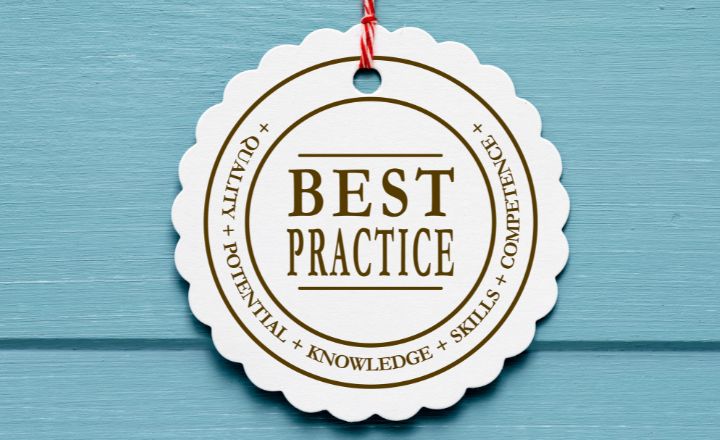By May Lise Roseth Larsen
One of the best things I know about my job is finding solutions . Solutions that allow me to perform a task either better or more efficiently. It could be that the result is more accurate, that the control is better, that the job goes faster or that the system simply does the job for me. Recently, I have been involved in exactly this! It has been incredibly fun and motivating to be able to modify a process and show a better result. Everyone gets the job done, but everyone doesn't necessarily work according to best practice , do you?
Everyone gets the job done, but everyone doesn't necessarily work according to best practice , do you?
May Lise Roseth Larsen Senior Consultant

The process and best practices
Before you can see what the best way to carry out a process is, you need to analyze the process itself as it is today. It is important that you familiarize yourself with what you do, how you do it, who does what, why you do it, what you want to achieve, and where there may (sometimes) be challenges. Are there one or more bottlenecks , or is it perhaps understanding and competence that affect the process? Is it the use of the system? A small change can in some cases make a big difference, and maybe it's so simple that you just don't know about an opportunity that already exists.
Identification and comparison
Once you have identified the current solution , you can start the review of each step and compare these with what is perceived as best practice. It can often be challenging to assess one's own processes, and it can therefore be useful to see everything with new eyes. To achieve this, you can either make use of internal resources from parallel departments, the same type of departments in other countries or external consultants.
External consultants often have the advantage of having seen different systems, businesses and industries. They have experience of what works and what should be laid as foundations for a more successful result. It can be as simple as how employees are grouped, or how different reports are defined. Or avoiding the risks that come with having undocumented processes. With the broad background they often have, external consultants can meet you with qualified advice.
What, how, who
When you have to assess what and how a task is carried out, it will be natural to start by looking at documented processes. But in some cases, the processes are not documented at all, often because someone knows them by heart. Others have documented their processes, but it may be a deficient or outdated process descriptions. A good process must be formulated and presented in such a way that an outsider, within the field, in theory, should be able to carry out the tasks based on the documentation alone.
In addition to the fact that this makes your company less vulnerable to unforeseen events such as illness, dismissals or furloughs, it also has several other advantages. Because when you have to put together such well-described documentation, you have to familiarize yourself with all the details of the entire process. Take the payroll run process for example. Here, all steps should be described, with screenshots that include details of transaction codes and variants. There should be no doubt about what and how. In addition, good documentation will contain the expected result and not least what you must do if you do not get the result you expected. You should include different pitfalls, causes and solutions to produce the desired result. It is also important to include who performs the various tasks, who is responsible for what, and when it must be done.
Best practice therefore often uses various checklists , where you fill in what has been done as you complete the tasks. When you include deadlines in the checklist, you will also be able to check whether there are any bottlenecks. Could there be any specific parts of the process where it usually stops? Or could it be that you are too dependent on specific individuals? This usually has to be tested in practice, only then will you see what works. It will also be natural to identify any substitutes so that you can reduce the number of bottlenecks to a minimum.
… and why
In order to create a good understanding , it can be very sensible to add why you do the various steps in exactly the way you do them. The better understanding of the system and the tasks you have, the better the task will be carried out. Such information is not necessarily common in a process description, but can be included in status meetings, written technical descriptions as a supplement to the process description, or in forums. Many people have godde experiences with participating in user forums. You get to discuss various issues, hear what others are doing, and learn about their experiences. Together you can find solutions for your current challenge.
Small changes can make a big difference
To get a godd process in place does not need to take a lot of time. It may be that only some of the steps need some adjustments, that some tasks need to be changed, or that you need different deadlines. It may be that some tasks are too manual or that one lacks system support.
As a payroll consultant, I, together with my colleagues, have learned to know many different processes. We have experience over several years and have a good basis for seeing what makes a process good. There is not necessarily just one best practice that is the same for everyone, but there is a best practice for your company or your type of company. We are happy to help you with your processes and look forward to sharing our experiences with you.



